In the world of knitting, “Yarn round needle” is a fundamental technique that unlocks a realm of creativity and design possibilities.
This phrase encapsulates the artful act of looping the yarn around the knitting needle in a deliberate manner. It’s a maneuver that adds an extra stitch or creates decorative openings in the fabric.
Abbreviated as “yarn” in knitting patterns, mastering the yarn round needle technique is essential for knitters seeking to elevate their craft.
Whether you’re crafting delicate lace patterns, charming eyelets, or increasing stitches, understanding this technique empowers knitters to infuse texture and intricacy into their projects, transforming a simple strand of yarn into a canvas of limitless potential.
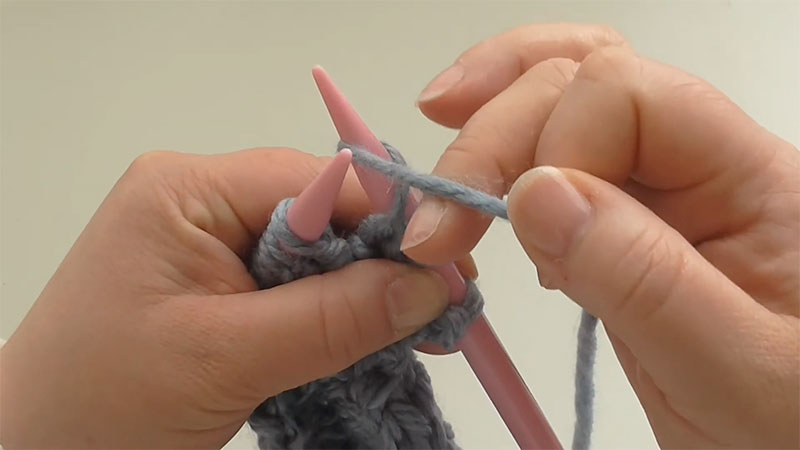
What Does Yarn Round Needle Mean?
“Yarn round needle” is a common knitting technique used to create various decorative and functional elements in knitting projects.
This phrase refers to the action of wrapping the yarn around the knitting needle in a specific way. It is often abbreviated as “yarn” in knitting patterns.
To execute a yarn round needle, simply bring the yarn to the front of the work if it’s not already there, then wrap it once around the knitting needle in a clockwise direction (when viewed from above).
This maneuver essentially creates an extra loop or stitch on the needle without involving the existing stitches on your needle.
Yarn rounds on a needle can be used for lace patterns, decorative eyelets, or to increase the number of stitches in your work.
When combined with other knitting techniques, yarn rounds can produce intricate and visually appealing designs in your finished project.
Understanding how to perform a yarn round needle is a valuable skill for knitters looking to add texture and complexity to their creations.
Variations of Yarn Round Needle
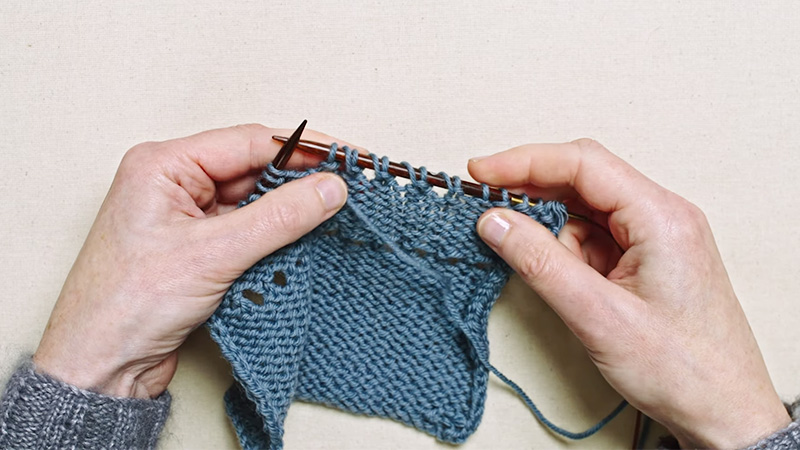
While the basic yarn round needle technique is relatively simple, there are several variations and combinations that knitters use to achieve different effects in their projects.
Some of the most common variations include:
Yarn Over (YO)
This is the most basic and widely used form of yarn round needle. It is often indicated in knitting patterns as “YO” and results in an open eyelet hole in your fabric. Yarnovers are commonly used in lace knitting and for decorative purposes.
Double Yarn Over (YO2 or YO twice)
To create a larger eyelet or hole, you can perform a yarn over twice in succession. This is indicated in patterns as “YO2” or “YO twice.” It results in a larger gap between the stitches.
Yarn Round Needle Between Knit and Purl Stitches
Sometimes, you may need to perform a yarn round needle between a knit and a purl stitch.
In this case, you would insert the right-hand needle as if to knit, then wrap the yarn around the needle, and then purl the next stitch. This creates a twisted yarn, which is used in various textured patterns.
Yarn Round Needle as Part of a Stitch Pattern
Yarn round needle can be incorporated into intricate stitch patterns to create beautiful designs.
These patterns may involve multiple yarnovers and knit or purl stitches to produce intricate lace or cable patterns.
Yarn Round Needle Increases
Yarnovers are frequently used as a method of increasing the number of stitches in your knitting.
By placing a yarn over between two stitches, you create an additional stitch, effectively increasing your stitch count. This is often used in shaping sleeves, necklines, and decorative elements.
Yarn Round Needle in Combination with Decreases
Combining yarn overs with decreases, such as knitting or purling two stitches together, can create balanced and visually appealing motifs in your knitting.
This is commonly seen in lace knitting, where the eyelets created by yarn overs are paired with decreases to maintain stitch count.
Applications of Yarn Round Needle
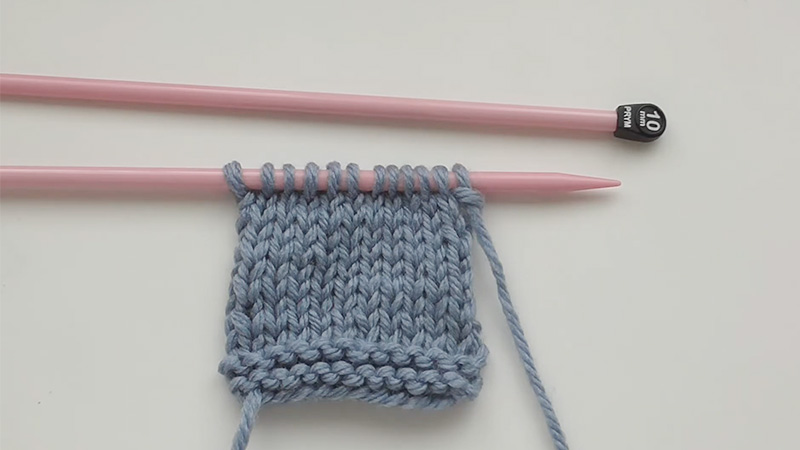
The yarn round needle technique has a wide range of applications in knitting, making it a versatile and essential skill for knitters.
Let’s explore some of the common uses of yarn overs and the yarn round needle technique:
Lace Knitting
Yarnovers are a fundamental element of lace knitting. They create the delicate, openwork patterns that define lace knitting.
By strategically placing yarn over and combining them with decreases, knitters can achieve intricate lace designs that range from simple eyelets to complex floral motifs.
Decorative Edging
Yarn overs can be used to create decorative edgings on shawls, scarves, and blankets. A row of yarn overs along the edge of your project can add a touch of elegance and flair.
Buttonholes
Yarn overs can serve as the foundation for buttonholes. By working a series of yarn overs and corresponding decreases, you can create buttonholes of various sizes to accommodate different types of buttons.
Increasing Stitches
As mentioned earlier, yarn overs are a common method for increasing the number of stitches in your knitting.
They are often used when shaping garments or accessories, such as sleeves, raglan increases, or thumb gussets in mittens.
Adding Eyelets
Yarn overs can be strategically placed to add eyelets for threading ribbons, cords, or elastic through your knitting. This is especially useful in projects like baby bonnets or drawstring bags.
Textured Patterns
Twisted yarn overs, where the yarn is wrapped around the needle in a particular way, can create interesting textured patterns. These can be used to add depth and visual interest to your knitting.
Aesthetic Design Elements
Yarn overs are not only functional but also serve as aesthetic design elements in your knitting. They can be used to break up monotonous stockinette stitch or to create focal points in your project.
Shawls and Wraps
Many shawl and wrap patterns rely heavily on yarn overs to create the airy and ethereal quality that makes these garments so attractive. Yarn overs are often paired with decreases to shape the shawl and create its unique drape.
Socks and Mittens
Yarn overs can be used in sock and mitten patterns to create lacy or textured cuffs or to shape the thumb gusset in mittens.
Adding Beads
For an extra touch of elegance, beads can be threaded onto the yarn and placed on the stitch during a yarn over. This is a more advanced technique but can result in stunning, beaded lace patterns.
Tips and Tricks for Successful Yarn Overs
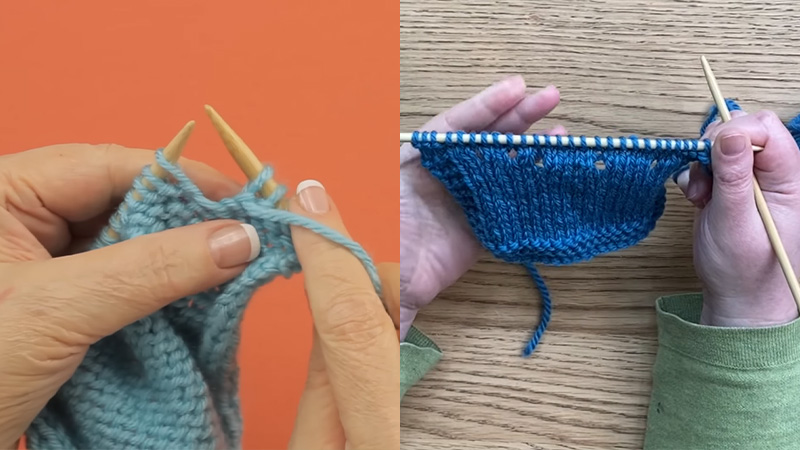
While the yarn round needle technique itself is relatively straightforward, here are some tips and tricks to ensure your yarn overs are neat and consistent:
Tension Control
Pay attention to the tension of your yarn as you wrap it around the needle. You want the yarn over to be snug enough to stay in place but not so tight that it distorts the surrounding stitches.
Practice
Like any knitting technique, practice makes perfect. Experiment with different yarn over variations and practice until you are comfortable and consistent in your execution.
Count Your Stitches
When using yarn overs to increase or create decorative patterns, it’s important to keep track of your stitches.
Make sure to account for the yarn overs in your stitch count, especially when working on intricate patterns.
Stitch Markers
Consider using stitch markers to help you keep track of your yarn overs, especially in lace patterns. Place a marker after each yarn over to make it easier to see and count them as you work.
Yarn Selection
The type of yarn you choose can affect the appearance of your yarn overs. Thinner yarns will create more delicate and open eyelets, while thicker yarns may produce bolder eyelets.
Blocking
After completing your project, blocking can enhance the appearance of your yarn overs and lace patterns. Blocking involves wetting or steaming your knitting to set the stitches and open up lacework.
Troubleshooting for Yarn Round Needle
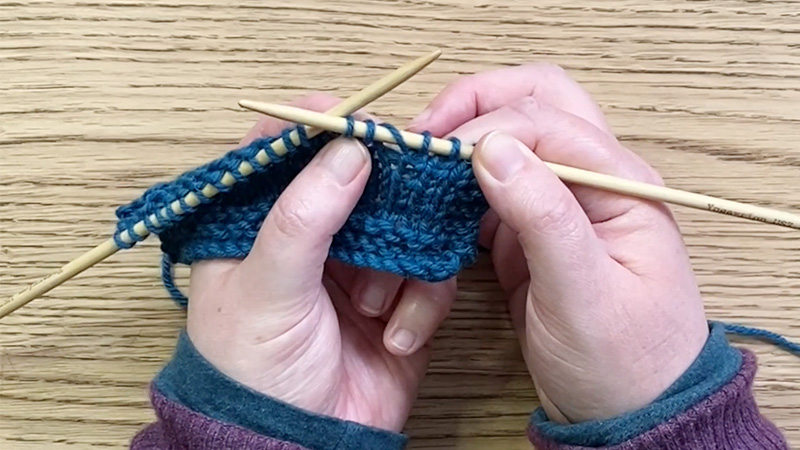
While the “yarn round needle” technique is a valuable tool in knitting, it can sometimes pose challenges for knitters, especially those who are new to the technique.
Here are some troubleshooting tips for common issues that may arise when using the yarn round needle method:
Uneven Yarn Overs
Inconsistent tension when wrapping the yarn around the needle can result in uneven yarn overs. To address this, practice maintaining a consistent tension as you wrap the yarn. Make sure to wrap it snugly but not too tight to ensure even-sized yarn overs.
Unintended Yarn Overs
Sometimes, you might accidentally create a yarn over when you didn’t intend to. To prevent this, pay close attention to your knitting pattern instructions.
Be mindful of where and how often you need to perform yarn round needle, and double-check your work as you go to catch any accidental yarn overs.
Yarn Over Placement
The placement of yarn overs is critical for achieving the desired pattern or effect. Make sure you’re wrapping the yarn in the correct direction (usually clockwise when viewed from above) and at the specified location in your pattern.
Counting Stitches
Yarn overs can sometimes be overlooked when counting stitches, leading to mistakes in your pattern. Be diligent in counting both your regular stitches and the yarn overs to ensure you have the correct stitch count for each row.
Tight Yarn Overs
If your yarn overs are too tight, they can distort the fabric and make it difficult to knit into them on the following row. Pay attention to the tension of your yarn overs, ensuring they are loose enough to accommodate a needle without difficulty.
Skipping Yarn Overs
Missing a yarn over can disrupt the pattern and affect the overall look of your project. Double-check that you’ve executed all the required yarn overs as indicated in the pattern.
Practice and Patience
Like any knitting technique, mastering the yarn round needle method takes practice. Don’t get discouraged if it doesn’t come easily at first. Spend time practicing the technique on a swatch before incorporating it into a larger project.
What Is the Difference Between Yarn Over Needle and Yarn Round Needle?
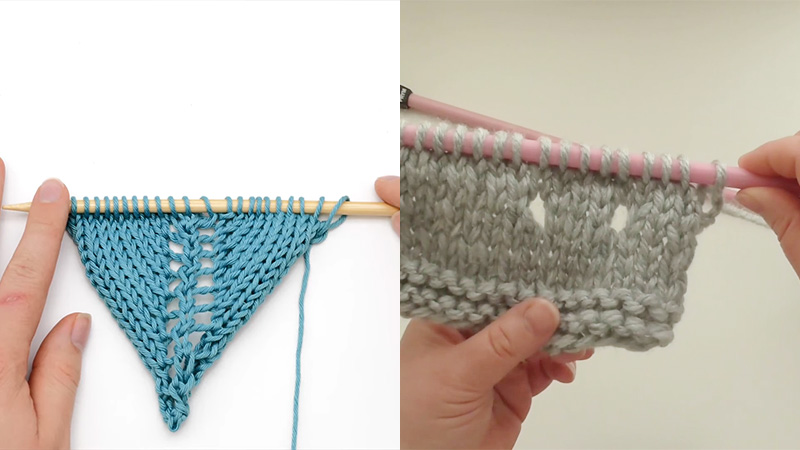
In the world of knitting, “yarn over needle” and “yarn round needle” are two closely related techniques that involve manipulating the yarn to create additional stitches and achieve specific effects in your knitting projects.
While these terms may sometimes be used interchangeably, they have distinct differences in execution and outcome.
Let’s explore the variations between “yarn over needle” and “yarn round needle” in the table below:
| Aspect | Yarn Over Needle | Yarn Round Needle |
| Technique Description | In “yarn over needle,” the yarn is brought | In “yarn round needle,” the yarn is also |
| from back to front, wrapped once around | brought from back to front but is wrapped | |
| the needle in a counter-clockwise (or anti- | once around the needle in a clockwise | |
| clockwise) direction, and then continues | direction before continuing with the rest | |
| with the next stitch. This creates a new | of the stitch. This creates a new loop or | |
| loop on the needle. | stitch on the needle. | |
| Purpose | Used for various purposes such as lace | Primarily used for decorative lace |
| patterns, increasing stitches, and adding | patterns, decorative eyelets, and | |
| decorative details. | increasing stitches. | |
| Direction | Yarn is wrapped in a direction opposite | Yarn is wrapped in the same direction as |
| to the needle’s movement (counter-clockwise | the needle’s movement (clockwise when | |
| or anti-clockwise). | viewed from above). | |
| Abbreviation | Often abbreviated as “yo” or “yo, k1” (for | Typically abbreviated as “yrn.” |
| “yarn over, knit 1”). |
FAQS
Is “yarn round needle” the same as a yarn over?
No, while they are related techniques, they differ in the direction of yarn wrapping. “Yarn round needle” involves clockwise wrapping, while a yarn over can be either clockwise or counterclockwise.
Can I use “yarn round needle” for decreasing stitches?
While it’s not commonly used for decreasing, “yarn round needle” primarily creates additional stitches.
What happens if I forget to do a yarn round needle in a lace pattern?
Skipping a yarn round needle can disrupt the lace pattern and result in incorrect stitch counts. It’s essential to carefully follow the pattern instructions to maintain the desired design.
Can “yarn round needle” be used in crochet projects?
“Yarn round needle” is a knitting technique and is not directly applicable to crochet. In crochet, similar effects can be achieved using yarn overs.
Are there any alternative names for “yarn round needle” in knitting patterns?
Yes, in some knitting patterns, you might encounter variations like “yarn round the needle” or “yarn around the right-hand needle,” which essentially refer to the same technique.
Wrap Up
In knitting, “yarn round needle” emerges as a pivotal technique, offering endless creative possibilities to skilled artisans.
This method, involving a deliberate wrapping of yarn around the needle in a clockwise direction, serves as a gateway to crafting lace patterns, decorative eyelets, and elegant increases.
Its application spans various knitting styles, contributing to the formation of delicate lacework, intricate textures, and stunning fabric details.
Through “yarn round needle,” a simple strand of yarn is transformed into a tool for intricate design, making it a cherished skill for knitters seeking to elevate their craft.
This technique’s elegance lies in its ability to turn a basic stitch into a canvas for artistic expression, where every loop of yarn tells a story of creativity and mastery.
Leave a Reply